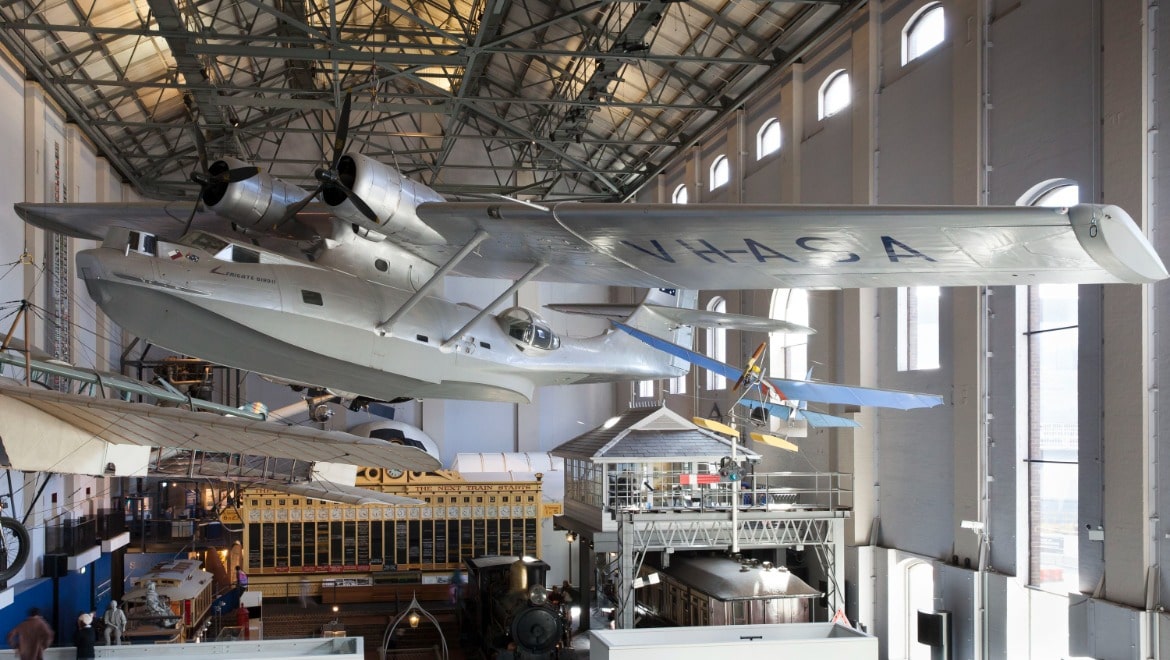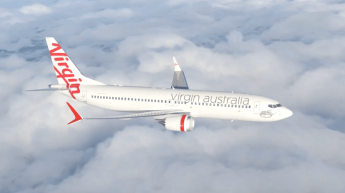
The iconic Australian Catalina flying boat Frigate Bird II has been lowered from its prized position at the Powerhouse Museum as part of a new exhibition that opened on 6 October.
For the first time in over 30 years, Catalina will be leaving its ceiling position and will become the focal point of the new exhibition.
In 1951, the Catalina completed the first return flight from Australia to South America. Piloted by Sir Patrick Gordon Taylor, the latter’s two-week journey was the first crossing of the South Pacific Ocean and a vital step in expanding the global aviation network.
Sir Patrick departed from Sydney’s Rose Bay and made stops along the way before reaching Chile.
Ten years after his journey, Sir Patrick donated the Catalina flying boat to the Powerhouse Museum and has since then been a central part of the transport exhibition.
This new exhibition will ensure the public gets a close-up view of the aircraft and will include artefacts from the flight, including material from the Pacific Islander communities that Taylor visited.
Powerhouse CEO Lisa Havilah said, “Frigate Bird II is one of the most iconic objects in the Powerhouse collection and one much loved by the public for over 30 years. This exhibition presents a rare opportunity for our audiences to connect with the stories of this piece of Australian aviation history.”
However, the lowering of the aircraft hasn’t been received warmly. The Powerhouse has been surrounded by controversy after announcing that the museum will be moving to Parramatta.
In 2020, Powerhouse announced that the Catalina will be featured “as part of curatorial programming at the new Museum in Parramatta”.
One of Taylor’s daughters, Gai Taylor, has claimed that moving the aircraft from Ultimo to Parramatta will cause irreparable damage and that the Powerhouse “shows an incredible lack of appreciation, understanding and love of our aviation history.”
The proposal to move the aircraft was then scrapped and has resulted in the current exhibition.
Kylie Winkworth, a former trustee of Powerhouse Muesum, doesn’t trust this new decision to lower the aircraft and claims that the Powerhouse would only do so if they had the intention of moving it.
“They have announced that they will continue to display technology, science engineering and design,” she said. “But that’s not true … there will only be three objects permanently retained at the Powerhouse in Ultimo — the Catalina, the Boulton & Watt steam engine, and Loco No 1.”
“It will be presented within the museum, but where and how is subject to all of the design and development that will happen over the next couple of years. It might go somewhere else in the museum…” Havilah said in relation to whereabouts of the aircraft after the exhibition.
















Andrew
says:Love this history. Glad it is accessible I Sydney. Love Temora and scone museums, and vital that regional areas have access to history as well, but would love more sharing/rotation of displays…
Just to note it is Sir Patrick, not Sir Taylor.
Damien Sloane
says:Dear Casey, When addressing or writing about a knight of the realm they are referred to by their first or christian name. In this instance “Sir Patrick”.
Steve
says:The correct use of the title “Sir” with regards to Knighthoods – a knighted male is addressed as Sir Firstname, his wife as Lady Surname; a knighted female is addressed as Dame Firstname, her husband as Mr. Surname, ie he does not share the distinction of his wife. So, in regards to Sir Patrick Gordon Taylor, he would be addressed as Sir Patrick, not Sir Taylor as was disrespectfully done in this article.
Stu Bee
says:Perhaps they could be moving it into a better location for visitors to look into her? Instead of cranking your neck to took at the underside of the aircraft?
Crazy I know….
Phil Heesch
says:P G Taylor actually left Australian shores for that epic flight from the Clarence River at Grafton NSW on 14th of March 1951 after a shakedown flight from Rose Bay Sydney to Grafton the previous day.